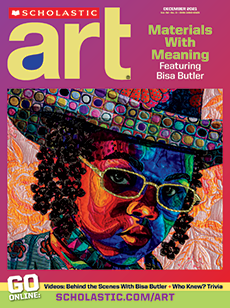During the 1960s and ’70s, Mexican Americans organized to fight for civil rights. This wave of activism became known as the Chicano movement. Chicano artists have played a crucial role in defining Mexican American identity on their own terms and combating stereotypes.
Many Chicano artists were—and continue to be—inspired by ancient Mexican Indigenous art and history. They also echo more recent Mexican artists, like Frida Kahlo and Diego Rivera. The contemporary Chicano artists featured here continue to promote themes of the Chicano movement.
During the 1960s and ’70s, Mexican Americans fought for their civil rights. This is known as the Chicano movement. Artists were important to the movement. Their ideas impact Mexican American culture today. Many Chicano artists are inspired by ancient Mexican Indigenous art. They also draw from more recent Mexican artists, like Frida Kahlo and Diego Rivera.
